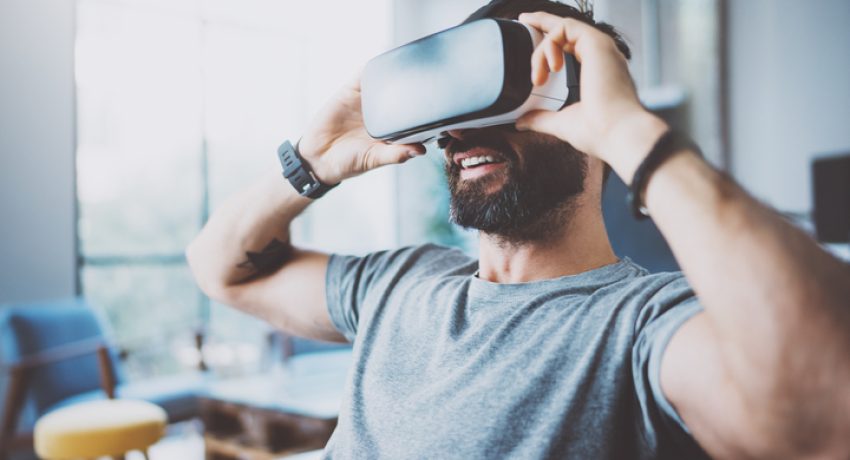Virtual reality could very well be the most powerful tool the real estate industry has ever seen. Even if your clients don’t plan on donning the oversized goggles just yet, you can stay ahead of the trend by learning how you could effectively use VR when selling a home.
With VR, your Clients can Experience a New Home, Without Leaving Their Own
There’s more to virtual reality than what meets the eye. While your clients will only have to slip on a VR headset, you are responsible for creating the content in which they will virtually walk through. As such, it’s crucial to use a professional program to develop a house tour where customers feel like they’re actually walking through the property. High-definition cameras, stationary handheld devices, and 3D scans are all options deemed to be fit for a quality VR experience.
The programs used to formulate a VR house tour also need to be of high quality. After all, the program is going to produce the final product and ultimately dictate the level of experience and success your virtual reality house tour has. You need to ensure it can handle high-quality content, large media file sizes, and several features required to create a positive experience for your consumers.
Focus on The Quality of The Visual Content
Virtual reality allows prospective homebuyers to virtually navigate through a home by a handheld remote. As such, you can imagine how complicated the process of formulating it can be. There are many nooks and crannies to a home that need to be included in the virtual house tour to ensure the consumer receives a genuine experience. After all, if certain portions of the VR experience are fuzzy, low-quality or missing, potential homebuyers won’t feel satisfied with the tour which can result in a lack of offers. It’s similar to physically showing a house, but forbidding homebuyers from looking at certain rooms or features will negatively affect the selling of the home.
In order to effectively use virtual reality, you must produce content that thoroughly shows all aspects of the property. Potential homebuyers should be able to virtually walk through the property, from the curb to front door, interior and exterior as if they were physically there.
Use Virtual Reality as A Tool to Increase Productivity and Efficiency
Virtual reality won’t necessarily eliminate potential homebuyers need to physically see the home. However, it can help real estate agents eliminate the rigmarole of property showings. Consumers don’t want to waste their time, and real estate agents understand that time is money. So, VR can provide the ultimate solution for both consumers and businesses.
This revolutionary technology allows homebuyers to view as many homes as they like all from one location. This instantly eliminates travel time, scheduling issues and time spent looking at properties as it can all be done at once. Once the consumer has selected the homes in which they’re interested in, real estate agents can focus their time on said properties instead of driving clients around town looking at all homes for sale, even the ones that are of no interest to them.
If used correctly, VR can increase productivity and efficiency within your real estate practice, which has the potential to increase your overall sales. This revolutionary technology is fairly new, however by implementing it into your business when it is within means to do so can boost your business and give you a competitive advantage.








